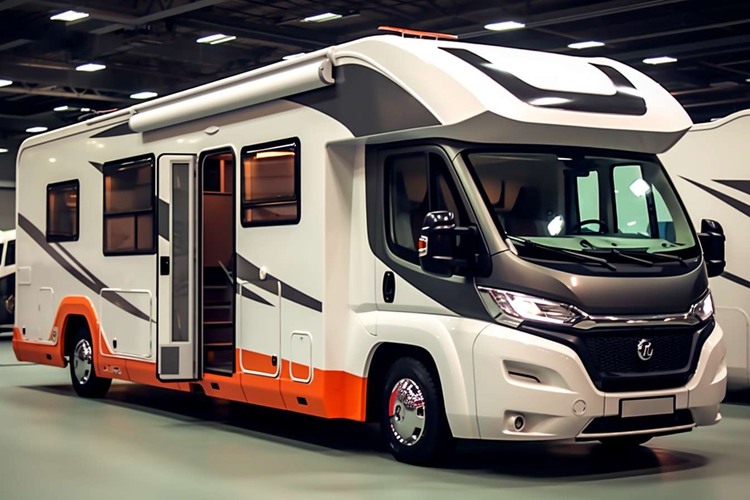Choosing the Perfect Small Camper for Your Next Road Trip
Choosing the perfect small camper for your next road trip can greatly improve your travel experience. Whether you are an experienced traveler or a first-time camper, selecting the right vehicle is key to ensuring comfort, convenience, and flexibility throughout your journey.

Key Features to Consider When Selecting a Small Camper
When evaluating small campers, several essential features deserve your attention. First, assess the sleeping capacity and bed configuration—some models offer convertible dinettes, while others feature permanent sleeping areas. Kitchen facilities vary dramatically from basic cooktops to full galleys with refrigerators and microwaves. Bathroom options range from none (relying on campground facilities) to wet baths that combine toilet and shower spaces.
Storage is another crucial consideration for small camper living. Look for models with clever storage solutions like under-bed compartments, overhead cabinets, and multifunctional furniture. Climate control capabilities matter significantly depending on your travel seasons and destinations—some small campers offer full heating and cooling systems, while others provide more basic temperature regulation.
Additionally, examine construction quality and materials. Lightweight aluminum frames offer durability with minimal weight impact, while fiberglass shells provide excellent weather resistance. The electrical system’s capacity will determine your ability to power devices and amenities, with options ranging from basic battery setups to solar-ready configurations with inverters.
Popular Small Camper Models and Their Unique Benefits
The market offers diverse small camper options to match various travel styles. Teardrop trailers like the nuCamp TAB 400 provide aerodynamic design and surprising amenities despite their compact size. Standing just over 7 feet tall, these campers typically include a dedicated sleeping area and an external kitchen galley, making them ideal for couples seeking simplicity.
Pop-up campers deliver exceptional versatility, with models like the Forest River Flagstaff offering hard-sided security when closed and expanded living space when set up. Their lightweight design makes them towable by many standard vehicles, appealing to travelers who don’t want to invest in a dedicated tow vehicle.
For those seeking standalone transportation, small Class B motorhomes like the Winnebago Solis combine driving and living quarters. Though more expensive than towables, they eliminate the need for a separate tow vehicle and offer true all-in-one convenience with integrated bathroom and kitchen facilities.
Truck campers represent another popular option, with models like the Lance 650 sitting in a pickup truck bed, providing excellent off-road capability while maintaining essential amenities. This configuration appeals particularly to outdoor enthusiasts who plan to access remote locations.
Fuel Efficiency and Environmental Considerations
Small campers deliver significant advantages in environmental impact and operating costs compared to their larger counterparts. Their reduced weight translates to better fuel economy—many can be towed by vehicles achieving 18-22 MPG versus the 8-10 MPG typical of larger motorhomes. This efficiency translates to substantial fuel savings during extended trips.
Modern small campers increasingly incorporate eco-friendly features. Solar panel compatibility allows for off-grid power generation, reducing generator use and associated emissions. Composting toilets eliminate the need for chemical treatments and frequent black water disposal. LED lighting systems and energy-efficient appliances minimize power consumption, extending battery life and reducing resource needs.
Many manufacturers now emphasize sustainable materials in construction, including recycled composites, responsibly sourced wood products, and non-toxic insulation materials. When researching models, look for manufacturers that highlight their environmental commitments and sustainable practices as part of their brand values.
Cost Analysis: Buying vs. Renting a Small Camper
The financial considerations of small camper ownership extend beyond the initial purchase price. New small campers range widely in price based on design, features, and construction quality. Entry-level models start around $15,000, while feature-rich options can exceed $50,000.
Beyond purchase costs, ownership expenses include insurance ($500-1,200 annually), regular maintenance ($500-1,500 annually), storage fees if home parking isn’t available ($50-200 monthly), and depreciation of approximately 20-30% in the first year.
| Camper Type | Average New Price | Average Used Price (3-5 years) | Typical Rental Cost (Weekly) |
|---|---|---|---|
| Teardrop Trailer | $12,000-25,000 | $8,000-18,000 | $400-700 |
| Pop-up Camper | $10,000-20,000 | $5,000-15,000 | $350-600 |
| Small Class B | $80,000-150,000 | $60,000-120,000 | $1,200-2,000 |
| Truck Camper | $15,000-40,000 | $10,000-30,000 | $500-900 |
Prices, rates, or cost estimates mentioned in this article are based on the latest available information but may change over time. Independent research is advised before making financial decisions.
Renting provides an excellent way to test different models before committing to purchase. For occasional travelers (fewer than 3-4 weeks annually), renting typically proves more economical than ownership when considering all associated costs. However, frequent travelers often reach a breakeven point after 30-45 days of annual use compared to rental costs.
Safety and Comfort Tips for Small Camper Travel
Maximizing safety and comfort in small camper travel requires thoughtful preparation. For safety, ensure your tow vehicle matches the camper’s weight requirements with appropriate margin. Regular maintenance checks should include tires, brakes, and all electrical systems before each significant journey. Invest in quality stabilizers to minimize movement when parked, and consider a backup camera system to improve visibility during maneuvering.
Weight distribution deserves particular attention in compact spaces. Store heavier items low and centered, securing everything properly before travel. Develop and practice emergency protocols, including evacuation routes and communication plans for remote travel areas with limited connectivity.
For comfort in limited square footage, embrace multifunctional design principles. Seek collapsible items like silicone dishware and foldable storage containers. Create designated spaces for frequently used items to establish efficient routines. Climate management becomes crucial in small spaces—consider additional insulation, window coverings, and portable fans to supplement built-in systems.
Organization systems make tremendous difference in small camper livability. Wall-mounted storage, under-bed containers, and ceiling nets utilize vertical space effectively. Many experienced campers follow the “one-in, one-out” rule, removing an item when adding something new to prevent clutter accumulation in the limited space.
With thoughtful selection and preparation, a small camper can provide the perfect platform for memorable road trips, blending transportation and accommodation into one efficient package for your next adventure.




